With a goal to build out the network of their municipal composting programs and provide more reliable access to private haulers for commercial organics, the Housatonic Resources Recovery Authority has not only built innovative programs that have resulted in effective waste diversion throughout the region, but they are aiming to push for more source separation programs for clean valuable material to reduce their carbon footprint.
The Housatonic Resources Recovery Authority, also known as HRRA, is the regional municipal solid waste (MSW) and recycling management organization for the Housatonic Valley municipalities of Bethel, Bridgewater, Brookfield, Danbury, Kent, New Fairfield, New Milford, Newtown, Redding, Ridgefield, Roxbury, Sherman, Weston, and Wilton. The Authority is made up of one representative and one alternate from each municipality for a total of 28 members. Established in 1986, the Housatonic Resources Recovery Authority (HRRA) (Brookfield, CT) was created at a time when most municipal landfills in the region were nearing capacity, and the Connecticut State Department of Energy and Environmental Protection (DEEP) was not approving permits for new landfills or landfill expansion and instead moved to 100 percent waste-to-energy. The state created waste sheds and issued grants to municipalities to create regional solid waste and recycling authorities.
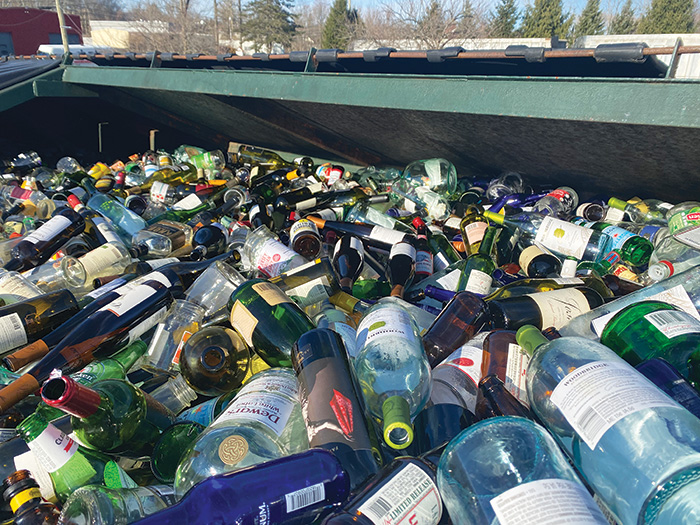
The HRRA took on added responsibility for regional recycling when the State Mandatory Recycling Act took effect on January 1, 1991. All HRRA municipalities participate in the HRRA recycling program. With a $2,000,000 grant from the State DEEP, the HRRA purchased recycling sorting equipment and machinery, and entered into a contract with the private transfer station in Danbury, to construct and operate a facility for recyclables collected throughout the region. As required by state law, recyclables from the HRRA communities are separated from MSW by the consumer or generator and picked up at curbside, from recycling containers, or from local drop off or recycling centers by private haulers for delivery to the Danbury Transfer Station. At the transfer station, recyclables are separated from any non-recyclable contaminants. All materials, except for glass, are baled and shipped to various markets to be recycled into renewable packaging products. Glass is separated at HRRA transfer stations and is sent directly to recyclers. In addition, since 1992, HRRA has worked to assist member municipalities to organize Household Hazardous Waste (HHW) collection events for residents. There are currently six events offered each year.
Serving 14 municipalities in western Connecticut between two counties and a population of more than 263,000 people, HRRA employs two full time staff, an Executive Director and Administrator, and one part-time public education coordinator. HRRA facilitates a monthly regional recycling task force where training is provided to local recycling coordinators to assist HRRA with enhanced public education and outreach. HRRA’s public education coordinator’s job is to visit schools throughout the 14 member municipalities and teach waste reduction and recycling, and conduct school waste audits. The HRRA provides regular “trash talks” and composting 101 classes to the public throughout the year.
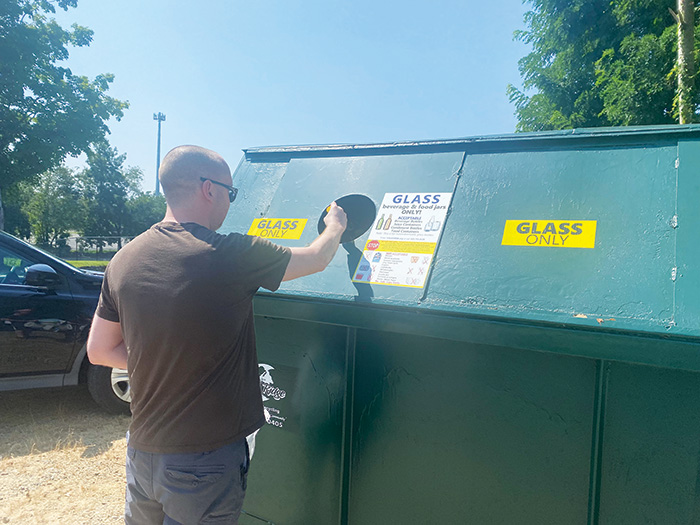
Photos courtesy of the Housatonic Resources Recovery Authority.
The HRRA also facilitates an annual Recycling Billboard Contest to promote recycling in schools’ grades K – 12. 2024 marks the 17th anniversary where more than 2,000 students enter to win their artwork on the back of 20 buses for two months. This year’s theme is “‘Keep it loose’ don’t bag or bundle your recycling!” Students are asked to create a billboard ad to encourage residents to keep their recycling loose in their recycling bins. In years past, the theme has been about separating food scraps, recycling right, to recycle your glass separately to promote the regions glass program. For added educational tools besides the extensive comprehensive website, the HRRA promotes the Recycle CT Wizard App that can be downloaded from Apple or Google. The wizard is a search tool for residents to know at their fingertips what is in or what is out for recycling items in their bin. The authority also provides printable recycling guides that promote Connecticut’s universal recycling guide.
Developing Important Partnerships
As a government authority with long-term contracts, HRRA has not been negatively impacted by COVID, supply or labor shortages, however, they have seen the impact to local private haulers, especially with tip fees. “In the HRRA region, we have over 70 private haulers who collect curbside solid waste and recycling or bulky/junk. Since 2017, the recycling tip fee has gone from $37.50T to $119.54T and is currently down to $70.34 a ton, putting added burden on our small hauling businesses,” says Jennifer Heaton-Jones, HRRA’s Executive Director.
In 2019 to help reduce the tip fee, the HRRA worked with Oak Ridge Waste & Recycling to implement a regional collection of source-separated glass. Every HRRA member town has a glass collection container provided by Oak Ridge who also provides the transportation. Since the implementation of the program, the region has diverted more than 1,700 tons of glass from being sent 500 miles out of the state of Connecticut to a landfill for alternative daily cover. The HRRA and Oak Ridge partnered with Strategic Material and Urban Mining, glass recycling companies both located in Connecticut. Urban Mining makes Pozzotive® a high performance postconsumer pozzolan and functional industrial filler, which is made from 100 percent recycled postconsumer glass. Strategic Material is North American’s largest glass recycler with a processing plant in Connecticut. They create a wide range of products used in daily life, including fiberglass insulation, food and beverage containers, reflective materials, and other consumer and industrial products. The region is now currently collecting nearly 500 tons of glass a year and expects to increase that number with public education and outreach.
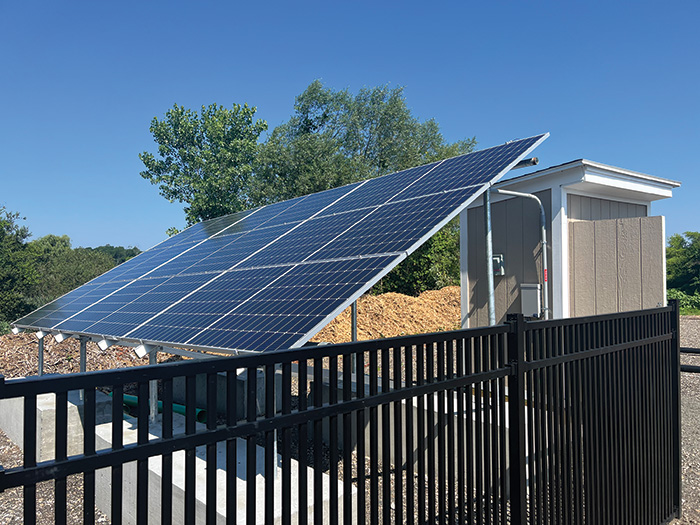
Building Effective Organics Programs
HRRA’s biggest challenge is facing a lack of disposal capacity in the state; with that comes higher tip fees with little or no control in keeping cost down. The state of Connecticut produces approximately 3.5 million tons of municipal solid waste and yet only has the capacity for 2.7 million tons. To combat this, in 2014 HRRA developed and tested the first municipal organics curbside collection program of its kind in the state, in Bridgewater, CT. The pilot program proved to be successful in engaging participation with the public. “Approximately 16 percent of the town took part in separating their food waste from the waste stream. The material collected was nearly free of contamination and was sent to a commercial facility in a neighboring town to be processed into compost. Each spring, the compost is returned to the residents to be used in their home gardens and projects,” explains Heaton-Jones. “The ending factor was cost. At the end of the pilot, residents were not willing to pay for the collection at the curb. Taking that into consideration and not wanting the source separation of food scraps to stop, the program transitioned to a drop-off program only, which allowed residents to drop-off at no additional cost. Residents now bring their food waste to the town recycling center and a private hauler then transports the material to the local commercial processor and the compost is then returned in the spring.” This program was then duplicated and implemented in Bethel, Bridgewater, Kent, Newtown, New Fairfield, Redding, and Ridgefield, and Wilton CT.
Heaton-Jones points out that the major cost of the program is transportation and disposal fees. These costs have prohibited municipalities from expanding their programs and threaten their long-term existence. The solution to a successful self-sustainable program is onsite composting. “Not only would composting onsite reduce the burden of cost, but it would also reduce the carbon footprint by removing the added transportation to dispose of the material and to transport it back to the community for use. Lack of funding and professional expertise has prevented the HRRA from moving the program in this direction.”
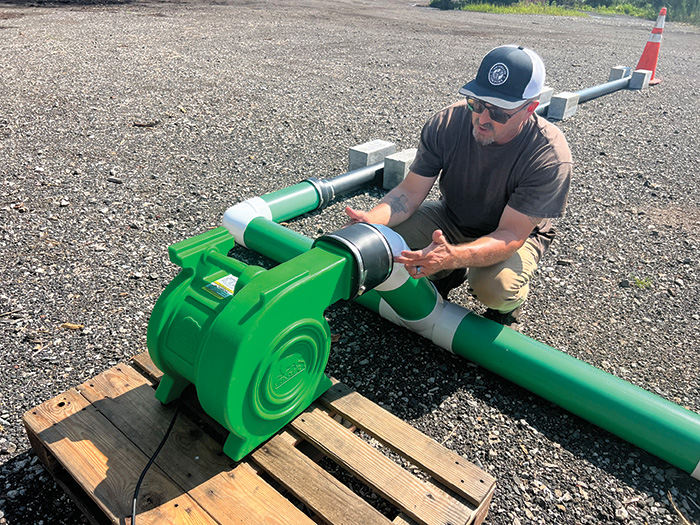
Organics programs provide the largest opportunity to increase Connecticut’s waste diversion goals. According to the 2015 waste composition study (by CT DEEP), more than 926,000 tons of readily compostable organics were disposed, or nearly 40 percent of total MSW disposal. This includes more than 519,000 tons of food waste, 56,000 tons of yard waste (e.g., branches and stumps, pruning and trimmings), 100,000 tons of leaves and grass, and 249,000 tons of compostable paper (e.g., uncoated paper cups and plates, paper food cartons, napkins, and paper towels).
“Food waste is generated at every stage of the supply chain. When food is wasted, we are also wasting the fresh water, chemicals, energy, and land used to produce food. Opportunities exist to reduce food wasted by businesses and households as well as work with businesses and farms to recover more food for humans and animals. The top growth priorities for organics are to strengthen and expand both the collection system and to expand processing capacity,” stresses Heaton-Jones.
There are 118 active leaf composting facilities in Connecticut, with a combined throughput of more than 775,000 cubic yards per year of incoming feedstock. These include 86 municipal facilities, private facilities, and seven farm-based facilities. Ten of the facilities are identified as accepting grass. Municipal operations tend only to accept leaves generated by that town and may also provide small quantities of finished compost to residents for free or at a nominal charge.1
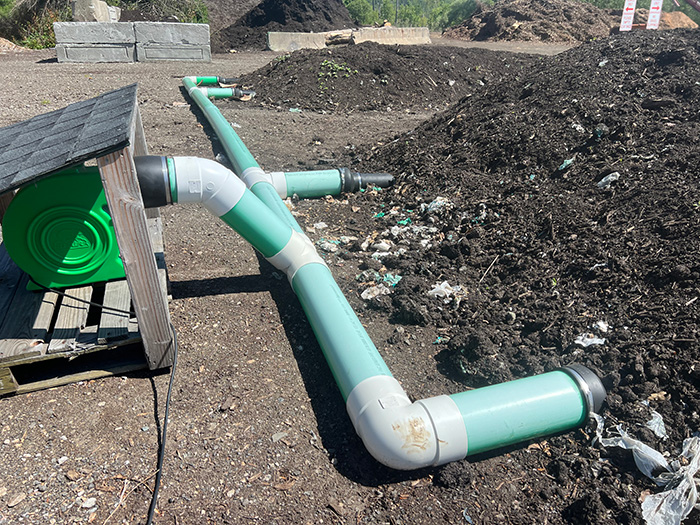
Sustainable Material Management
In August 2020, the Connecticut Department of Energy and Environmental Protection created the CT Coalition for Sustainable Material Management (CSSMM) to address the concerns of solid waste capacity in the state. Connecticut’s waste management system is in crisis due to an aging waste-to-energy infrastructure, no operating landfills, and only two commercial composting and one AD facility operating to manage food waste in the entire state. The CSSMM called upon state and municipal leaders to work together to discuss and create innovative programs and investments to reduce municipal solid waste tonnage to prevent municipal solid waste being shipped out of state to landfills.
Through the Organics working group of the CSSMM, solutions were discussed for state mandates to be put in place to drive diversion through policy. In preparation for the possible unfunded mandate, the Housatonic Resources Recovery Authority has determined that municipal onsite composting would be the most sustainable, economical, and environmentally effective solution for expanding residential organics diversion from the waste stream and must be implemented immediately.
Therefore, HRRA is working to increase access for residents to source separate their organics in the most economical and feasible way for individuals. First, by providing backyard composting classes and, at one time, steep discounts to composters. The region currently has eight drop-off locations and soon will add the 9th location in the southern part of the region in Weston, CT. In 2021, HRRA received a USDA grant to build a municipal solar powered ASP composting site, the first of its kind in the state. Heaton-Jones states, “The goal of this project is to create a self-sustaining closed loop composting system for transforming residential food waste into an end-product for community and agricultural use. This innovative project demonstrates that municipalities can manage food waste locally, reduce the carbon footprint of offsite disposal and contribute to the waste diversion goals of the state.”
This project uses an Aerated Static Pile (ASP) Composting process. The mixture of carbon (leaves) and nitrogen (food scraps) are placed on the solar powered ASP piping system. The solar panels power a timed blower, which forces air into the perforated piping to circulate air through the composting pile. The system maintains proper moisture and oxygen levels needed to produce a high-quality compost.
“This project increases access to compost for residents, community garden groups, and local farmers for use as an alternative to synthetic fertilizers. It also provides the municipality with readily available compost for storm water management and erosion control. Since its launch in the fall of 2022, the town has converted 43,000 lbs. of food scraps into 60 cubic yards of readily available compost for the community,” says Heaton-Jones. “The HRRA is currently assisting the Town of Newtown with building the second solar powered ASP system in the region with a CT DEEP SMM grant.”
Growing Networks
Municipalities in Connecticut, and across the country, are left with the difficult task of managing material that can be problematic and sometimes dangerous to manage. “It has been a privilege and honor to advocate for legislative initiatives to help support the member municipalities with difficult to manage material. Our most outstanding achievement has been the direct involvement in passing EPR for gas cylinders and tires, both first in the nation,” says Heaton-Jones proudly.
The Extended Producer Responsibility law for cylinders that passed in 2022 and to be implemented in October of 2025 will provide an assurance for end-of-life management of gas cylinders from the smallest 1/2 lb. camping cylinders to our 20 lb. backyard grilling tanks. This law was designed to create an easy and convenient collection system for unwanted cylinders and prevent them from going into the waste and recycling stream where they cause danger and significant damage to equipment.
The Tire Extended Producer Responsibility law that passed in the 2023 session to be and implemented in 2025, will vastly improve the current system that is simply not working and makes the manufacturers a vested stakeholder in the outcome of the solution. The EPR for Tires System will reduce costs for Connecticut consumers and cities and towns. Reduce illegal dumped tires, increase accountability and responsibility of every tire with a track and trace system and increase tire recycling as currently many tires are landfilled or sent for incineration.
Heaton-Jones worked with the Product Stewardship Institute and industry stakeholders for both policies. The gas cylinder legislation was a three-year process, while the tire legislation was many years in the making and goes back to 2015. Consumers and residents can learn more about EPR policies through the CT DEEP website. Once both programs are implemented, the programs are required to provide public education and outreach. The HRRA has an extensive website that guides residents on the proper end of life management of all materials including cylinders and tires.
Heaton-Jones emphasizes, “We currently have a goal to build out the network of municipal composting programs with additional ASP system to process residential material and provide more reliable access to private haulers for commercial organics using the waste shed model. We plan to continue to support Save As You Throw programs to help residents reduce their trash and save and continue to push for more source separation programs for clean valuable material to reduce our carbon footprint and lower cost.” | WA
For more information, e-mail [email protected] or visit www.HRRA.org.
Note
See www.ct.gov/deep/cwp/view.asp?a=2718&q=325374&depNav_GID=1645 and https://portal.ct.gov/-media/DEEP/waste_management_and_disposal/Solid_Waste_Management_Plan/CMMSFinalAdoptedComprehensiveMaterialsManagementStrategypdf.pdf
